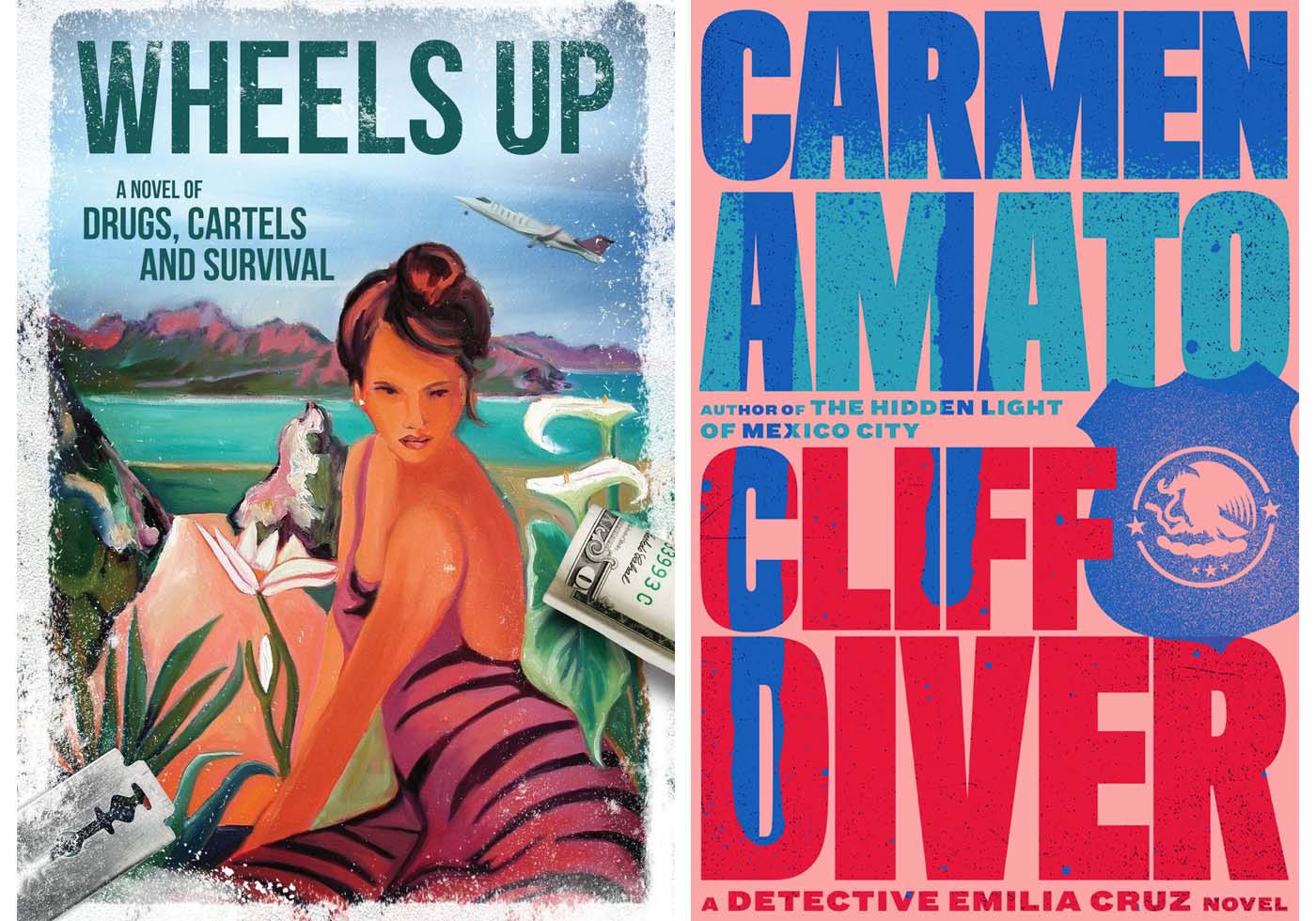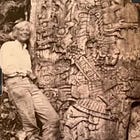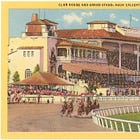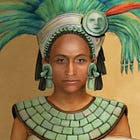Hola Amigos! In this post I’m stepping outside the norm and introducing you to my alter ego—Narco noir novelist. I’m posting an excerpt from a Criminal Element article fellow thriller author and Substacker Carmen Amato and I co-wrote titled The Ascent of Narco Noir—A Literary Game Changer. Our novels feature women protagonists who live south of the US border, in occupations far from the safety of conventional lives. This post is a snapshot of the Women of Narco Noir. As my protagonist, I’ve chosen a drug lord narca and Carmen has chosen a detective, the only woman in the Acapulco police force. Take a walk on the wild side as we introduce you to Layla Navarro and Emilia Cruz. Check out links below for books and additional info, or in menu at the top.
Meet narco noir, the new category rising fast and hitting hard with gritty tales ripped from today’s headlines, fueled by cartel violence, corruption and the jagged line between justice and revenge. Real events and real people are recast through the lens of fiction, but narco noir authors have the street cred to write with an insider’s grip on authenticity.
Narco noir novels span the divide between crime fiction—where criminals are the main characters—and procedurals, driven by those playing for the opposition—law officers, private detectives, or even the “everyman” caught in a desperate situation. Narco noir conflicts are born from a drug-trafficking dynamic, with numerous plot threads fueled by cartel violence and corruption in Mexico, Colombia, and Central America. Imagery can be graphic with depictions of cartel threats, tortures and killings.
From Don Winslow’s cartel thrillers to Arturo Pérez-Reverte’s Queen of the South, to Netflix’s Narcos or Sicario II, it’s no mystery why narco noir is trending.
Stepping into the limelight are the women of narco noir—do-gooders and badass babes—and they’re erupting off the page. In this genre, real events and people blur into fictional characters you’ll never forget.
Gender roles in the narco world
Male protagonists rule in a genre that touts El Chapo-like drug lords and relentless federal agents. But as new storylines make room for a compelling array of complex personalities, female characters are moving in.
Four female archetypes dominate in narco noir: the narca, the cop, the civilian caught in the crossfire, and the woman as chess piece.
The war on drugs shapes and confines their very existence: It controls what they do, where they go, who they love and how long they live. The drug war has long since claimed their emotional lives, relegating them to a world of loneliness. Their single commonality is the need to survive.
The narca
The female drug lord is as powerful and ruthless as her male counterparts. Amid the paranoia and shifting alliances so common in Narcolandia, she’s fighting for respect from male partners and a seat at the table.
Unforeseen circumstances may have forced her into a position she was never groomed for—Loss of a cartel husband, father or brother, taken by death or incarceration. With the breadwinner gone, someone needs to step up. A woman at the helm is usually a last ditch effort to save the clan.
Sandra Ávila Beltrán, real life narco trafficker known as ‘La Reina del Pacifico,’ or Queen of the Pacific, has inspired a slew of narca characters. Born into cartel royalty due to her father’s links to the Guadalajara Cartel, she grew up in tremendous wealth. Though she attended college and planned a clean break from the family business, a kidnapping by a cartel boyfriend changed her trajectory. She ended her studies and entered the drug business where her natural leadership skills surfaced. She quickly moved through the ranks, rising straight to the top.
She was later implicated on trafficking and money laundering charges in the US, served seven years in prison, but managed to wear designer clothes and have Botox injections while behind bars. Nicknamed Cartel Kardashian, she didn’t shy away from publicity, scored an interview with Anderson Cooper, and published a book of her prison interviews. She was deported back to Mexico in 2013 to serve out the balance of her sentence.
Ávila Beltrán’s prototype is just the tip of the iceberg. Female stand-ins for male counterparts have long graced the pages of cartel novels, films and telenovelas. They come in all stripes: Queen pins, assassins, fixers, brain trusts.
JEANINE: “Wheels Up—A Novel of Drugs, Cartels and Survival, book one in my Yucatán trilogy, introduces Layla Navarro, an anti-hero who rises to the top of the Culiacan Cartel, Mexico’s most powerful (fictional) cartel, after her notorious drug lord uncle is recaptured.
When her older brother dies in an ambush and her other brother proves not up to the task, Layla steps in to carry on the family business. Her upward rise is thwarted at every turn by macho subservients and her uncle’s back-stabbing partner.
When she runs afoul of a dubious cartel jefe during a dangerous delivery of drugs from Guatemala to Mexico, she faces a kill-or-be-killed situation.”
The cop
Like the narca, female cops and federal agents battling the drug war operate in a male-dominated world. Unlike the narca, the cop earns little compensation. Her location is fixed; her hours are long; there’s no glamour. The work is brutal and often dehumanizing.
CARMEN: “In my noir detective series, Emilia Cruz is the first female police detective in Acapulco, grappling with drug cartels, official corruption, and machismo.
Starting with Cliff Diver, Emilia is a woman unafraid to confront the violence in the Pacific coast city that in 2018 became Mexico’s homicide capital. At the same time, however, Emilia stands to lose her soul in the wreckage.
I drew on my 30-year career with the Central Intelligence Agency to infuse the series with authenticity. Emilia’s perpetual hunt for women who have gone missing—referred to as Las Perdidas or the Lost Ones—was inspired by the hundreds of women missing from Juarez. The novel 43 Missing is based on the 2014 mass disappearances from the Ayotzinapa teacher’s college not far from Acapulco.”
The civilian
Female civilians in narco noir are often journalists, healers or politicians—women attempting to provide civil authority. Their position is tenuous—they lack the narca’s money or the legal authority of a cop or federal agent. They are outliers with a steel backbone and a sense of morality.
María Santos Gorrostieta Salazar, the assassinated mayor of Tiquicheo, in Michoacán, has inspired female characters because of her unfailing courage after her husband, the incumbent mayor, was assassinated. On becoming mayor she survived three assassination attempts but was later kidnapped and assassinated by suspected drug traffickers in 2012.
Journalists on the line
Real-life journalists have also inspired narco noir characters. Mexico City author and investigative journalist Anabel Hernandez is best known for Narco Land and more recently, A Massacre in Mexico: The True Story Behind the Missing Forty-Three Students.
Before penning these treatises on cartels and corruption, she worked as a CDMX crime reporter. Her reporting became so abrasive that members of a cartel, identifying themselves as federal agents and armed with AK-47s, de-activated security cameras and shut down her entire Mexico City block to search for her.
Fortunately, at the time of the manhunt she was not home and escaped danger. Soon afterwards law enforcement assigned her a bodyguard and she left Mexico for the US where she taught investigative journalism at UC Berkeley. Eventually her fame caught up with her and word has it that she is once again undercover.
Journalist Lydia Cacho faced the same situation. Described by Amnesty International as “perhaps Mexico’s most famous investigative journalist and women’s rights advocate,” Cacho reported tirelessly on sexual abuse against women and children.
In her 2003 book, Demons of Eden, Cacho exposed a pedophile and child pornography ring in Puebla that included top tier politicos in its membership. Two years after the book’s publication, Cacho, who lived near Cancun and wrote for Por Esto, was kidnapped and tortured by Puebla authorities. She was put in the trunk of a car and driven to Puebla where they planned to arraign her. A network of friends sprung into action, located her, and bailed her out.
Unfortunately Cacho also had to flee Mexico for safety. Her lurid real-life stories sound like the stuff of legend but in fact are the genre’s backbone.
The chess piece or victim
Often a supporting character, the chess piece’s ability to survive is more fragile than the others. These women are the prostitutes, girlfriends, informants, or innocents caught in the crossfire. Either resigned to her fate—or clueless to what’s happening—a chess piece is abused by narcos and cops alike.
In Amato's Cliff Diver, hookers become informants to reveal the sordid sex life of a crooked cop. And in the later Pacific Reaper, women are lured into a human trafficking net supplying the narcos.
In book one of my Yucatán trilogy, Wheels Up—A Novel of Drugs, Cartels, and Survival, a key plot twist turns on Layla Navarro’s discovery of a 12-year-old girl, trafficked by her own cartel unbeknownst to Layla or her imprisoned uncle. Kidnapped from her barrio, the girl is used as chattel in the lucrative sex trade.
And in Tulum Takedown, the mayor of Tulum hosts a members only sex club in the remote Si’an Ka’an Reserve that preys on innocent women from local pueblos and recruits them for narco-traffickers.
Women as chattel
Feminism does not exist in narco noir.
Women are sex workers, prostitutes or mistresses. In Narco Land, Anabel Hernandez describes the fates of three women used by El Chapo while in a maximum-security prison near Guadalajara.
During his first incarceration, he set his sights on 23-year-old inmate Zulema Yulia Hernandez. She twice became pregnant and was forced to abort both times.
After tiring of her, he passed her around to prison managers and inmates. Shortly after being released, she was found dead in a car trunk with the letter “Z” etched into her buttocks, stomach, and breasts.
The second victim of El Chapo’s prison flings was an inmate charged with murder, Diane Patricia. After repeated gang-rapes, she attempted suicide. The rape culture eventually claimed her life.
El Chapo’s third victim was Yves Eréndira Moreno, a prison cook. He propositioned the 38-year-old many times, and for a while she avoided his advances. Being older she may have been more adept at dealing with his predatory moves. He escaped in 2001 and she managed to live through it.
In Guzman’s New York trial, various mistresses detailed how they met and were wooed by the drug lord. Lucero Guadalupe Sanchez Lopez described a near capture when the two were holed up at a remote hideaway as Mexican military helicopters flew overhead.
He disappeared down a tunnel hidden beneath a bathtub and onto a waiting motorcycle to make his escape. Guzman moved on to Mazatlan where he met up with his current wife, 29-year-old Emma Coronel Aispuro and their twin two-year-old daughters.
Days later he was apprehended, incarcerated for a second time, and eventually extradited to the US to face charges.
A crack in the archetypal ceiling
Emma Coronel Aispuro was the picture of the loving wife during the 2019 trial of El Chapo in New York City. At the trial’s close each day, they blew each other kisses.
With her husband guilty on all counts and imprisoned with no possibility of parole, Coronel was able to get on with her life. Unfortunately, after a brief foray selling clothing online, she fell into the family business. In 2021 she was arrested in the US on conspiracy charges to import and distribute illegal drugs. She was also charged with money laundering and served a three year prison sentence. She was released in 2023.
Coronel, who identifies as a model, appeared in September 2024 on stage at Milan Fashion Week. She is considered one of the richest women in the world with a supposed net worth of $5 billion USD. Will she break the mold and become a new narco noir archetype?
The intrigue of noir
As narco noir fiction grows in popularity, we wonder why we’re so fascinated with drug lords and crooked cops.
Is it the age-old game of cops and robbers but with higher stakes and riskier allegiances?
Is it the display of naked power?
Or are we drawn to the stories because they’re authentic. Many tales ring so true to life, readers try to guess which real life criminal inspired the fictional one.
In the genre, both sides of the law live crazy, drug and murder fueled lives steeped in paranoia. Death lurks in the shadows. Motives, vulnerabilities, occasional heroics are revealed, but never sugar-coated.
For most of us, these stories are light-years away from our own reality, yet we know they have been shaped by the truth.
Where will it lead? Probably to more and better narco noir fiction with more authors pulling on their own experiences.
Everyone wants a hero (or heroine). But maybe in today’s complicated world, an anti-hero or two is all we get.
THANKS TO CARMEN AMATO, author of the Detective Emilia Cruz police series. Beginning with Cliff Diver, Emilia, Acapulco’s first female police detective, comes out swinging. The series draws on Carmen’s counterdrug efforts during her 30-year CIA career. Barracuda Bay is her latest, fresh off the presses. Check out Carmen’s work at https://carmenamato.net/ and all Detective Emilia Cruz books can be found on Amazon: https://geni.us/Emilia2023
LINKS here to Wheels Up and Tulum Takedown, my Yucatán thriller series, and for reviews, check my website at https://www.jeaninekitchel.com
IF YOU’RE INTERESTED in supporting well-researched and thoughtful writing and you’ve been enjoying my posts and are feeling generous, your paid subscription would be appreciated. Keep up to date on Mexico, travel, chapters from Where the Sky is Born—how we bought land and built a house in Mexico. And opened a bookstore, too! All for $5/monthly or $50 per year.
HIT THE HEART at the top of this email to make it easier for others to find this publication (to stimulate those pesky algorithms) and make me very happy.
BACKSTORY—Puerto Morelos sits within 100 miles of four major pyramid sites: Chichen Itza, Coba, Tulum and Ek Balam. By living in close proximity to this Maya wonderland we pyramid hopped on our days off from Alma Libre, the bookstore we founded in 1997. Owning a bookstore made it easy to order every possible book I could find on the Maya and their culture, the pyramids, the archeologists who dug at these sites and the scholars who wrote about them, not to mention meeting archeologists, tour guides, and local Maya who popped into the store. I became a self-taught Mayaphile. Eventually website publishers, local newspapers and magazines, even guidebooks asked me to write about the Maya and Mexico. I’ll never stop being enthralled by the culture and glad there’s always new news emerging for me to report on right here in Mexico Soul. Do share this post if you know others interested in the Maya. Gracias!











Wowsers, Jeanine! Very informative and entertaining article on this subject. I've read both of your narco noir books, and I'm an avid reader of Carmen's narco noir books. (Her latest arrived in my Kindle downloads this week.) One of your sentences in this article sticks out to me: "Or are we drawn to the stories because they’re authentic. Many tales ring so true to life, readers try to guess which real life criminal inspired the fictional one." Write on, amiga.
Jeanine, wow!! This is so fascinating. You are so fascinating! Thanks for sharing your alter ego and this intriguing genre I've not explored.